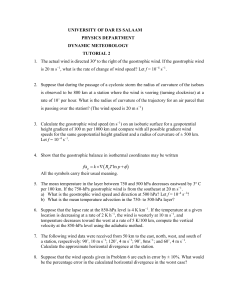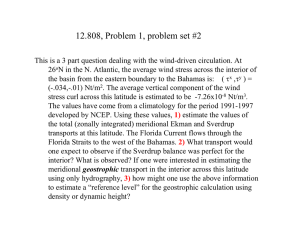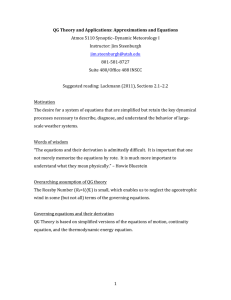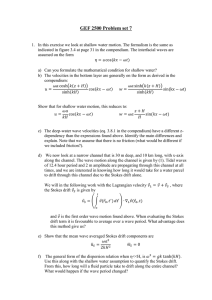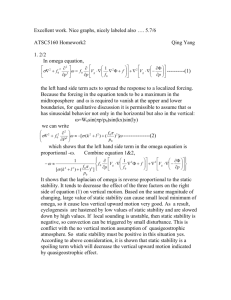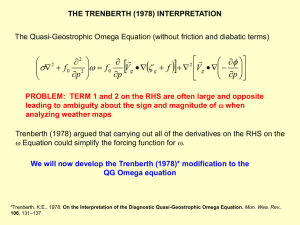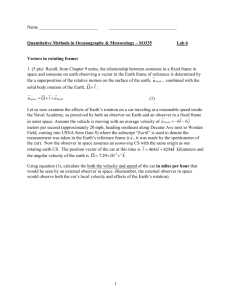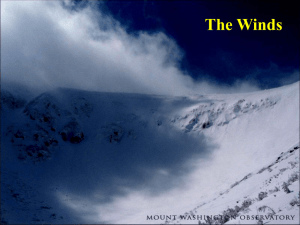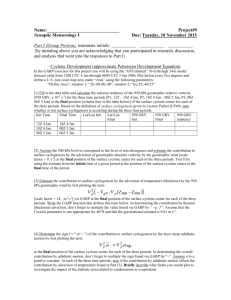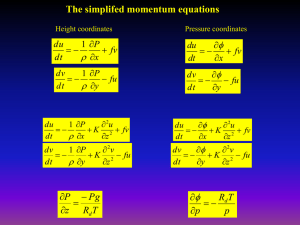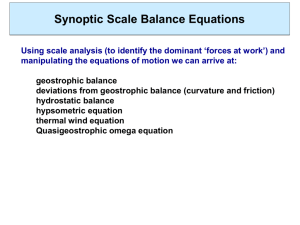The Quasigeostrophic Assumption and the Inertial
advertisement
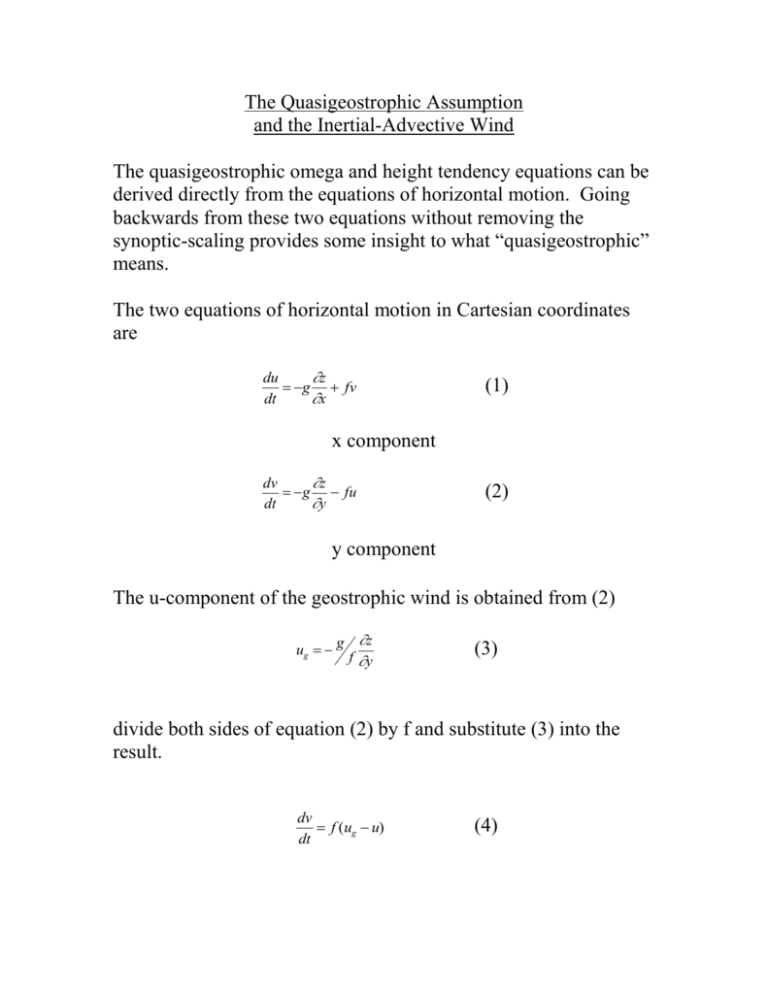
The Quasigeostrophic Assumption and the Inertial-Advective Wind The quasigeostrophic omega and height tendency equations can be derived directly from the equations of horizontal motion. Going backwards from these two equations without removing the synoptic-scaling provides some insight to what “quasigeostrophic” means. The two equations of horizontal motion in Cartesian coordinates are du z g fv dt x (1) x component dv z g fu dt y (2) y component The u-component of the geostrophic wind is obtained from (2) z ug g f y (3) by f and substitute (3) into the divide both sides of equation (2) result. dv f (ug u) dt (4) This equation states that there will be northward or southward acceleration of the air parcel if the real wind differs from the geostrophic wind. Let’s assume that we have initially only a west wind (a jet stream in the upper troposphere that lies along a line of latitude). For the sake of argument,let’s also assume that there are no west-east accelerations, so that (1) is zero, and the equation of horizontal motion reduces to the geostrophic wind (for equation (1) and and an acceleration given by (4). The real wind can always be broken into a geostrophic and an ageostrophic component u = u g + ua v = v g + va (5a) (5b) Substitute (5a) into (4) dv fua f (ug u) dt (6) Equation (6) gives the ageostrophic wind that occurs if the wind is balance. Note that the far right hand side says not in geostrophic that subgeostrophic flow will be associated with northward accelerations and vice versa. The quasigeostrophic assumption can be applied to (6) if we try to ”retain” some of the acceleration to the left hand side of the equation that is assumed to be zero in geostrophic flow. (Note: if the left hand side is zero, then (6) becomes the geostrohpic wind equation again.) To do that, we replace V in the equation of motion on the left hand side with the geostrophic wind 2 (essesntially, assuming that the ageostrophic wind along the y axis is small). Next, expand out the Lagrangian derivative Vg dV Vg Vg Vg w dt t z (7) By replacing the real wind with the geostrophic wind on the left hand side, we’re saying that the geostrophic wind “almost” is the same as the real wind. This allows us to add back a bit of the acceleration (which we have found out is related to divergence) that the geostrophic assumption strictly does not allow (since, except for the effect of the northward variation of the Coriolis parameter, the geostrophic wind is non-divergent). The first term to the right of the equals sign in (7) is the local change of the geostrophic wind. This is due to changes in pressure gradients (in turn due to isallobaric effects), and the motion of troughs and ridges, for example. If we start with the assumptions that the wind flow is zonal, this term is small or zero.¬† In essence, this term captures the proportion of the ageostrophic flow that is isallobaric. The far right hand term, called the inertial-convective term, is zero since w is zero in the upper troposphere (we'll look at the concept of this term another time). The second term to the right of the equals sign is essentially the advection of the geostrophic wind by itself. In other words, as an air parcel in geostrophic balance moves into a region with a different pressure gradient, it will initially have its initial speed which will be out of balance with the pressure gradient. (This is 3 sort of like a ball rolling down an inclined plane to a flat surface, proceeding along the flat surface, where there is no gradient, by its own momentum). This is called the "inertial advective wind" With these assumptions, equation (7) becomes dV Vg Vg dt (8) Putting (8) back into (6) (since there is no du/dt) we get dv Vg Vg fua f (ug u) dt (9) We’ll now apply this to the real atmosphere by taking your first look at jet streak dynamics. 4
